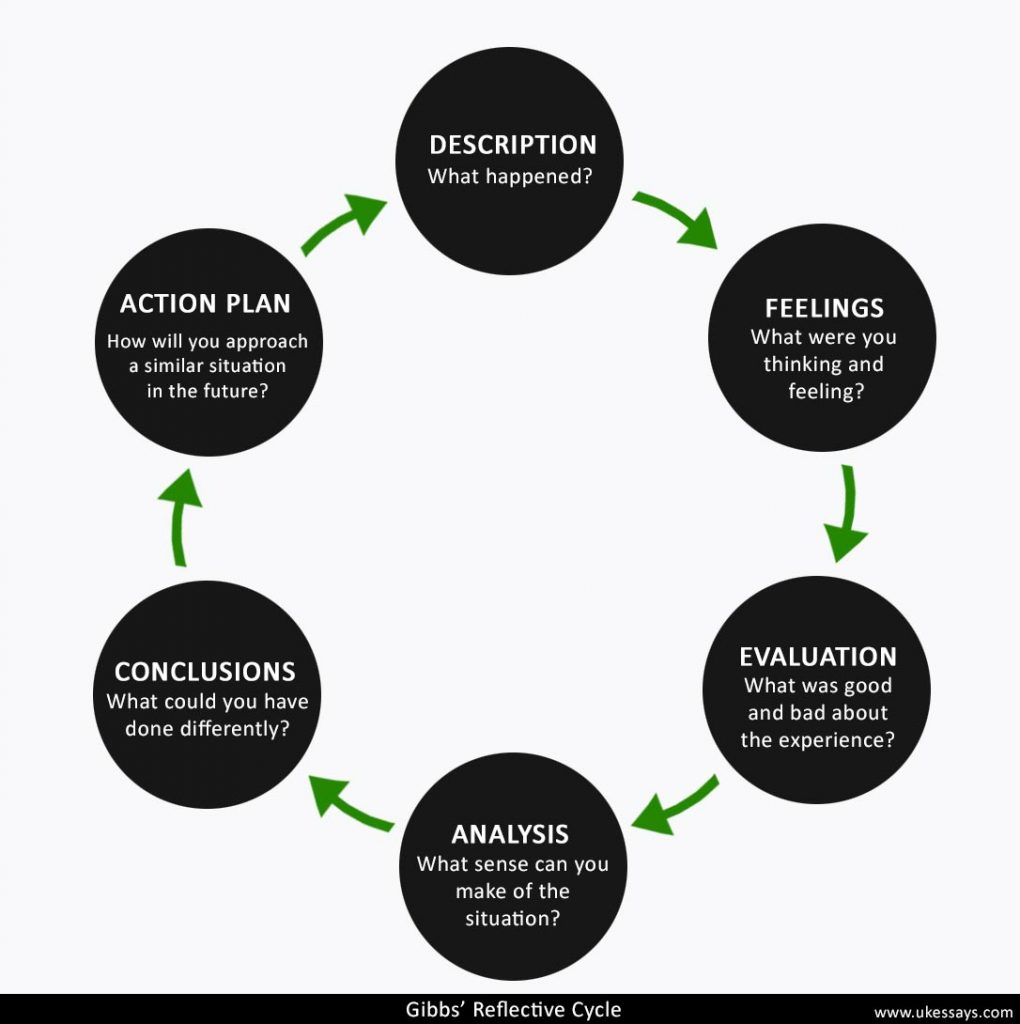“Why do I get the feeling that someday I’ll be describing this to a psychiatrist?”- How The Simpsons Predicted My First Day Of Work.
Will I be stuck wrapping cables for the rest of my life? Is the entire world I thought I knew a lie? and Is this resting heart rate normal? All of these questions and more answered on my first day of work.
My work based learning module allowed me the opportunity to test the waters of my desired field of work as a sound engineer for live gigs and studio recordings. The placement so far has given me an insight into how I would perform in the real world as a sound man in both the audio production side of things and in terms of personal relations in the workplace, after all what is a sound engineer when no artists want to record with them? I’ll be using Gibbs reflective model (Boud et al, 1985) (Robb and Lugea, 2021) throughout this blog to critically analyse and reflect on my performance and experiences of my first day at work placement.

171 BPM: My First Day
On my first day at placement in the Regional Cultural Centre, My supervisor Jeremy allowed me to use the studio space by myself to get comfortable with the space and equipment. My friend Malcolm had come along to record a song knowing that this was also a ‘test day’ for me, so the risks weren’t as severe if we ended the day with less than we had hoped as opposed to an artist I’ve never worked with before. When Jeremy left however I knew if I had a Fitbit tracking my heart rate it would have exploded right there and then. Mountains of equipment I hadn’t seen before, cables that looked like a snake pit and software I had seen in the matrix.
After a lot of internal (and external) panic, I took five minutes, went outside and conjured up a plan of attack for when I returned, I took everything one step at a time, remembering the signal flow of sound and setting up one microphone at a time.

135 BPM: Getting There
Looking back on the first few days it surprised me how taken aback I was by anxiety and unfounded fear. I feel these anxieties came from being in a new environment with new equipment under time pressures. My usual recording setup in my bedroom means I’m in a comfortable environment, I know the equipment inside out, whereas at my work placement I am plopped into this new space with all new equipment and a limited time frame to get the project done. Another important point that definitely added to the stresses of the day was the importance of a great first impression to my supervisor Jeremy. I knew that if I excelled in this position there was a very real possibility of a job offer later down the line. This Journal (Harris, M.J, 2008) highlights the importance of first impressions and how the first few instances of meeting someone will almost permanently mould how you view the person. Knowing this information, it was imperative I make a good first impression on Jeremy and show him I’m a hard worker that finishes tasks on time, otherwise it would be an incredibly hard climb to try and change his opinion of me. With all of these factors combined, it’s obviously clear now why the anxiety bubbled into uncontrollable territory.
It wasn’t all doom and gloom however! I asked Malcolm for honest feedback also as I thought it would be great to get the performers perspective on areas of improvement, here is what he had to say:
Malcolm’s Feedback:
Pros:
- Very easy to work with.
- very accommodating and timely.
- Overall very professional
Cons:
- A couple of teething issues with Logic software
90 BPM: Post-Game Analysis
Seeing these events through a different lens let me see that on this occasion my suspicions were correct about my teething issues showing on the new equipment and the other events surrounding the occasion impacting my performance, however through reflection I’ve learned that I had spent all of my time looking at the negatives. I had neglected my good qualities such as being accommodating and professional, which in my opinion are infinitely more difficult to learn and master than how a piece of equipment works (and which will also come more naturally with use).
When I began working and applying what I learned in my studies/practice the session ran smoothly and any slip ups that did occur were due to the mindless anxiety of plugging a cable out here or turning off an option there. The aim of the game is now clear for future recording sessions, as long as I could keep my nerves under control and apply what I’ve learned at university I stand a very good chance at having many successful sessions.
73 BPM: Conclusion
Understanding why these emotions happened is a good first step, but that doesn’t stop them from happening, so how do I plan on dealing with them when they arise?
I thought back and remembered reading about particular methods of controlling mood and emotion within cognitive behavioural therapy, there is a popular model within CBT on how our thoughts impact our behaviour. I have included a diagram below.
- Firstly, our thoughts create feelings
- Our feelings create a particular type of behaviour
- Finally, our behaviour reinforces our thoughts, and the cycle continues.
Unless I break this cycle by reflecting on events using models such as Gibbs to analyse the events and in the future alerting myself as to when it arises, the cycle will continue to spiral and impact my behaviour dramatically leading to similar recording sessions such as this one.
For me in this scenario and after much reflection, I came to the conclusion that I felt like I wasn’t good enough for this position, that I would ultimately fail, Malcolm would be disappointed and Jeremy would not be pleased with my work.
But how did this cycle of thoughts actually compare to reality?
Well, when Jeremy came back to check in on me, he was very pleased that I was able to solve all of the issues in the session and overall was very pleased with the outcome of the session. Alas a great first impression was born! In the future, I’ll most definitely be using both the Gibbs model of reflection and the CBT cycle of emotions to work through and understand my perception of events vs reality.
References:
Boud, D., Keogh, R. and Walker, D., 1985. Reflection. pp.Chapter 1, Chapter 6.
Robb, D. and Lugea, J., 2021. Week 3 Reflective Writing And Practice.
Harris, M. J., & Garris, C. P. (2008). You never get a second chance to make a first impression: Behavioral consequences of first impressions. In N. Ambady & J. J. Skowronski (Eds.), First impressions (pp. 147–168). Guilford Publications.
Bonfil, A. and Wagage, S., n.d. A Course in CBT Techniques. [E-Book] Available at: https://cogbtherapy.com/cbt-model-of-emotions Los Angeles:, p.Chapter 3.
Bibliography:
Boud, D., Keogh, R. and Walker, D., 1985. Reflection. pp.Chapter 1, Chapter 6.
Robb, D. and Lugea, J., 2021. Week 3 Reflective Writing And Practice.
Dkit.ie.libguides.com. 2021. LibGuides: Reflective Practice: Reflection. [online] Available at: <https://dkit.ie.libguides.com/reflective_practice/Reflection> [Accessed 21 November 2021].
Dkit.ie.libguides.com 2021. LibGuides: Reflective Writing [online] Available at: <https://dkit.ie.libguides.com/reflective_practice/reflective_writing> [Accessed 21 November 2021].
Harris, M. J., & Garris, C. P. (2008). You never get a second chance to make a first impression: Behavioral consequences of first impressions. In N. Ambady & J. J. Skowronski (Eds.), First impressions (pp. 147–168). Guilford Publications.
Bonfil, A. and Wagage, S., n.d. A Course in CBT Techniques. [E-Book] Available at: https://cogbtherapy.com/cbt-model-of-emotions Los Angeles:, p.Chapter 3.

Feast vs Famine

Facing Avoidance
You May Also Like

Assumption – the Parent of Confusion
24 November 2021
Facing Avoidance
26 November 2021
